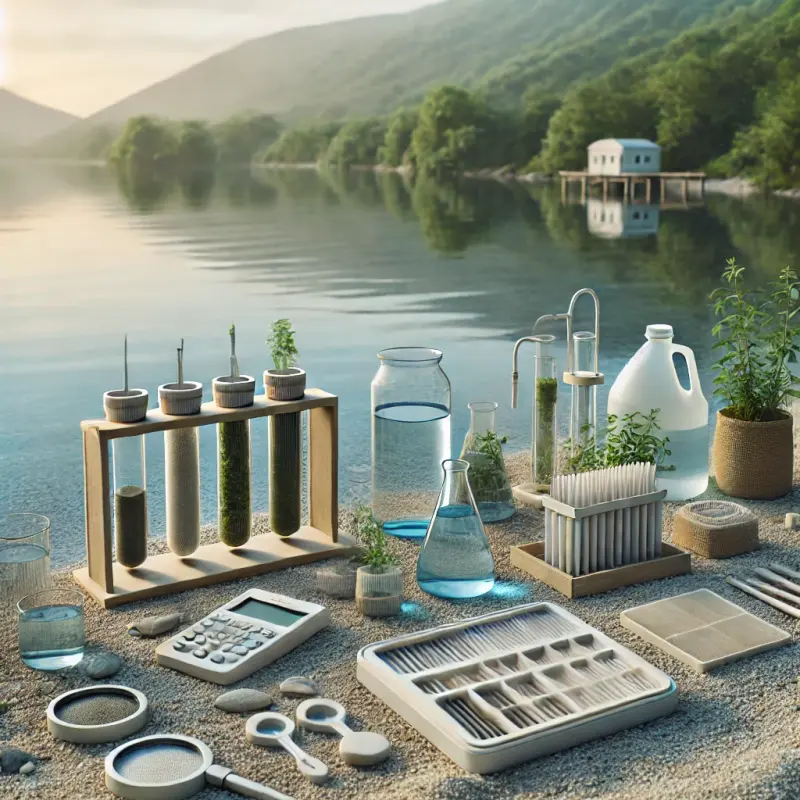Eco-Friendly Solutions for Enhancing Water Quality in Natural Water Bodies: How Technology Supports Cleanliness
Maintaining the purity of natural water bodies is essential for preserving biodiversity and ensuring the availability of clean water. Advancements in technology have introduced eco-friendly solutions that enhance water quality without harming the environment. This article explores various sustainable technologies and methods that contribute to the cleanliness of natural water bodies.

1. Biological Filtration Systems
Biological filtration utilizes natural processes to remove contaminants from water. By employing beneficial microorganisms, these systems break down organic pollutants, reducing harmful substances and improving water clarity. This method is effective in treating wastewater before it enters natural water bodies, thereby preventing pollution.
2. Phytoremediation
Phytoremediation involves the use of plants to absorb, accumulate, and detoxify pollutants from water. Certain aquatic plants can uptake heavy metals and other contaminants, effectively purifying the water. This approach is cost-effective and environmentally friendly, enhancing the aesthetic and ecological value of water bodies.
3. Constructed Wetlands
Constructed wetlands are engineered systems that mimic natural wetlands' filtration capabilities. They utilize vegetation, soil, and microbial activity to treat polluted water. These systems are particularly effective in removing nutrients, sediments, and pathogens, thereby improving water quality and providing habitat for wildlife.
4. Aeration Techniques
Aeration increases the oxygen levels in water, promoting the breakdown of organic matter by aerobic bacteria. This process helps in reducing the levels of harmful substances and prevents the formation of anaerobic conditions that can lead to foul odors and fish kills. Aeration can be achieved through mechanical aerators or by creating waterfalls and cascades that naturally oxygenate the water.
5. Floating Treatment Wetlands
Floating treatment wetlands consist of floating platforms planted with vegetation. The roots of these plants extend into the water, absorbing nutrients and contaminants. This method is effective in reducing nutrient levels, such as nitrogen and phosphorus, which are often responsible for algal blooms.
6. Green Bridges
Green bridges are eco-technological in-situ bioremediation systems that combine physical and biological filters to remove suspended and dissolved impurities from water. They help in reducing suspended solids through filtration and decrease chemical and biochemical oxygen demand through aerobic degradation. Additionally, green bridges aid in restoring the ecological food chain by supporting various aquatic species.
7. Bioremediation with Microorganisms
Bioremediation employs specific microorganisms to degrade pollutants in water. These microorganisms metabolize contaminants, converting them into less harmful substances. This method is particularly useful for breaking down complex organic compounds and is often used in conjunction with other treatment processes to enhance effectiveness.
8. Sediment Removal and Dredging
Over time, sediments accumulate in water bodies, leading to reduced depth and water quality. Dredging involves the removal of these sediments, which can contain pollutants and nutrients that contribute to water degradation. Regular sediment removal helps maintain water quality and prevents issues such as eutrophication.
9. Buffer Zones and Riparian Vegetation
Establishing buffer zones with native vegetation along the banks of water bodies helps filter runoff before it enters the water. Riparian vegetation traps sediments, absorbs nutrients, and provides habitat for wildlife. These buffer zones play a crucial role in preventing erosion and reducing the influx of pollutants into water bodies.
10. Public Awareness and Community Involvement
Educating communities about the importance of maintaining water quality and involving them in conservation efforts are vital components of sustainable water management. Community-led initiatives, such as clean-up drives and monitoring programs, foster a sense of responsibility and ensure the long-term success of water quality improvement projects.
11. Innovative Nano-Technology Solutions
One of the emerging advancements in water purification is the use of nano-filtration and nanotechnology. Nano-filters utilize membranes with tiny pores that can remove even the smallest contaminants, such as bacteria, viruses, and microplastics, from water. These technologies are highly effective and require minimal energy compared to traditional methods. Additionally, nanomaterials can be used for targeted pollutant capture, allowing for more efficient cleanup of specific contaminants, improving overall water safety and ecosystem health.
Incorporating these eco-friendly technologies and practices into water management strategies contributes significantly to the preservation of natural water bodies. By leveraging natural processes and sustainable methods, we can enhance water quality, support biodiversity, and ensure the availability of clean water for future generations.
Articles
Subscribe to our notifications to receive the latest and most interesting articles directly in your inbox.